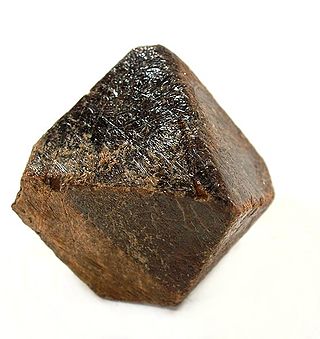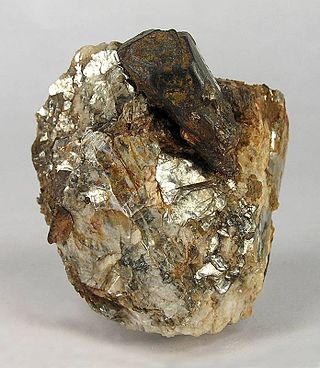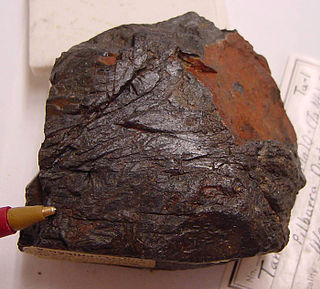 | ||||||||||||||||||||||||||||||||||||||||||||||||
| Niobium | ||||||||||||||||||||||||||||||||||||||||||||||||
|---|---|---|---|---|---|---|---|---|---|---|---|---|---|---|---|---|---|---|---|---|---|---|---|---|---|---|---|---|---|---|---|---|---|---|---|---|---|---|---|---|---|---|---|---|---|---|---|---|
| Pronunciation | /naɪˈoʊbiəm/ | |||||||||||||||||||||||||||||||||||||||||||||||
| Appearance | Gray metallic, bluish when oxidized | |||||||||||||||||||||||||||||||||||||||||||||||
| Standard atomic weight Ar°(Nb) | ||||||||||||||||||||||||||||||||||||||||||||||||
| Niobium in the periodic table | ||||||||||||||||||||||||||||||||||||||||||||||||
| ||||||||||||||||||||||||||||||||||||||||||||||||
| Atomic number (Z) | 41 | |||||||||||||||||||||||||||||||||||||||||||||||
| Group | group 5 | |||||||||||||||||||||||||||||||||||||||||||||||
| Period | period 5 | |||||||||||||||||||||||||||||||||||||||||||||||
| Block | d-block | |||||||||||||||||||||||||||||||||||||||||||||||
| Electron configuration | [ Kr ] 4d4 5s1 | |||||||||||||||||||||||||||||||||||||||||||||||
| Electrons per shell | 2, 8, 18, 12, 1 | |||||||||||||||||||||||||||||||||||||||||||||||
| Physical properties | ||||||||||||||||||||||||||||||||||||||||||||||||
| Phase at STP | solid | |||||||||||||||||||||||||||||||||||||||||||||||
| Melting point | 2750 K (2477 °C,4491 °F) | |||||||||||||||||||||||||||||||||||||||||||||||
| Boiling point | 5017 K(4744 °C,8571 °F) | |||||||||||||||||||||||||||||||||||||||||||||||
| Density (at 20° C) | 8.582 g/cm3 [3] | |||||||||||||||||||||||||||||||||||||||||||||||
| Heat of fusion | 30 kJ/mol | |||||||||||||||||||||||||||||||||||||||||||||||
| Heat of vaporization | 689.9 kJ/mol | |||||||||||||||||||||||||||||||||||||||||||||||
| Molar heat capacity | 24.60 J/(mol·K) | |||||||||||||||||||||||||||||||||||||||||||||||
Vapor pressure
| ||||||||||||||||||||||||||||||||||||||||||||||||
| Atomic properties | ||||||||||||||||||||||||||||||||||||||||||||||||
| Oxidation states | common: +5 −3, [4] −1, [5] 0, ? +1, ? +2, [5] +3, [5] +4 [5] | |||||||||||||||||||||||||||||||||||||||||||||||
| Electronegativity | Pauling scale: 1.6 | |||||||||||||||||||||||||||||||||||||||||||||||
| Ionization energies |
| |||||||||||||||||||||||||||||||||||||||||||||||
| Atomic radius | empirical:146 pm | |||||||||||||||||||||||||||||||||||||||||||||||
| Covalent radius | 164±6 pm | |||||||||||||||||||||||||||||||||||||||||||||||
| Other properties | ||||||||||||||||||||||||||||||||||||||||||||||||
| Natural occurrence | primordial | |||||||||||||||||||||||||||||||||||||||||||||||
| Crystal structure | body-centered cubic (bcc)(cI2) | |||||||||||||||||||||||||||||||||||||||||||||||
| Lattice constant | a = 330.05 pm (at 20 °C) [3] | |||||||||||||||||||||||||||||||||||||||||||||||
| Thermal expansion | 7.07×10−6/K (at 20 °C) [3] | |||||||||||||||||||||||||||||||||||||||||||||||
| Thermal conductivity | 53.7 W/(m⋅K) | |||||||||||||||||||||||||||||||||||||||||||||||
| Electrical resistivity | 152 nΩ⋅m(at 0 °C) | |||||||||||||||||||||||||||||||||||||||||||||||
| Magnetic ordering | paramagnetic | |||||||||||||||||||||||||||||||||||||||||||||||
| Young's modulus | 105 GPa | |||||||||||||||||||||||||||||||||||||||||||||||
| Shear modulus | 38 GPa | |||||||||||||||||||||||||||||||||||||||||||||||
| Bulk modulus | 170 GPa | |||||||||||||||||||||||||||||||||||||||||||||||
| Speed of sound thin rod | 3480 m/s(at 20 °C) | |||||||||||||||||||||||||||||||||||||||||||||||
| Poisson ratio | 0.40 | |||||||||||||||||||||||||||||||||||||||||||||||
| Mohs hardness | 6.0 | |||||||||||||||||||||||||||||||||||||||||||||||
| Vickers hardness | 870–1320 MPa | |||||||||||||||||||||||||||||||||||||||||||||||
| Brinell hardness | 735–2450 MPa | |||||||||||||||||||||||||||||||||||||||||||||||
| CAS Number | 7440-03-1 | |||||||||||||||||||||||||||||||||||||||||||||||
| History | ||||||||||||||||||||||||||||||||||||||||||||||||
| Naming | after Niobe in Greek mythology, daughter of Tantalus (tantalum) | |||||||||||||||||||||||||||||||||||||||||||||||
| Discovery | Charles Hatchett (1801) | |||||||||||||||||||||||||||||||||||||||||||||||
| First isolation | Christian Wilhelm Blomstrand (1864) | |||||||||||||||||||||||||||||||||||||||||||||||
| Recognized as a distinct element by | Heinrich Rose (1844) | |||||||||||||||||||||||||||||||||||||||||||||||
| Isotopes of niobium | ||||||||||||||||||||||||||||||||||||||||||||||||
| ||||||||||||||||||||||||||||||||||||||||||||||||
Niobium is a chemical element; it has symbol Nb (formerly columbium, Cb) and atomic number 41. It is a light grey, crystalline, and ductile transition metal. Pure niobium has a Mohs hardness rating similar to pure titanium, [7] and it has similar ductility to iron. Niobium oxidizes in Earth's atmosphere very slowly, hence its application in jewelry as a hypoallergenic alternative to nickel. Niobium is often found in the minerals pyrochlore and columbite. Its name comes from Greek mythology: Niobe, daughter of Tantalus, the namesake of tantalum. The name reflects the great similarity between the two elements in their physical and chemical properties, which makes them difficult to distinguish. [8]
Contents
- History
- Naming the element
- Characteristics
- Physical
- Chemical
- Isotopes
- Occurrence
- Production
- Compounds
- Oxides, niobates and sulfides
- Halides
- Nitrides and carbides
- Applications
- Steel production
- Superalloys
- Niobium-based alloys
- Superconducting magnets
- Other uses
- Precautions
- References
- External links
English chemist Charles Hatchett reported a new element similar to tantalum in 1801 and named it columbium. In 1809, English chemist William Hyde Wollaston wrongly concluded that tantalum and columbium were identical. German chemist Heinrich Rose determined in 1846 that tantalum ores contain a second element, which he named niobium. In 1864 and 1865, a series of scientific findings clarified that niobium and columbium were the same element (as distinguished from tantalum), and for a century both names were used interchangeably. Niobium was officially adopted as the name of the element in 1949, but the name columbium remains in current use in metallurgy in the United States.
It was not until the early 20th century that niobium was first used commercially. Niobium is an important addition to high-strength low-alloy steels. Brazil is the leading producer of niobium and ferroniobium, an alloy of 60–70% niobium with iron. Niobium is used mostly in alloys, the largest part in special steel such as that used in gas pipelines. Although these alloys contain a maximum of 0.1%, the small percentage of niobium enhances the strength of the steel by scavenging carbide and nitride. The temperature stability of niobium-containing superalloys is important for its use in jet and rocket engines.
Niobium is used in various superconducting materials. These alloys, also containing titanium and tin, are widely used in the superconducting magnets of MRI scanners. Other applications of niobium include welding, nuclear industries, electronics, optics, numismatics, and jewelry. In the last two applications, the low toxicity and iridescence produced by anodization are highly desired properties. Niobium is considered a technology-critical element.




























